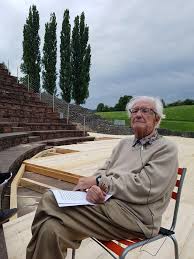What World Are We Moving Into?
EDITORIAL, 14 Sep 2020
#656 | Johan Galtung – TRANSCEND Media Service
I don’t know. But I think I know something… At least I think, hence I may know…
Not a world of nation states. Their time is over, except for the biggest ones. The majority are simply too small. A state is about power to control, by an organization also referred to as the state. The state inside the state– a state center to control the rest, the state periphery.
For that to work information about possible threats to the control must be ultra-quick, preferably the speed of light (not smoke signals between mountain-tops). Actually, this is more or less the world we have.
But that world is changing. The driving force being like it was, for Marx, changes in technology. But unlike Marx not of the means of production, but of the means of transportation and communication. From horseback and sailing ships to flights and missiles; from smoke signals to the speed of light. Quite a lot–.
So we get the change that has been going on for some time now, from a world of nation states toward a world of civilization regions; maybe about 10 of them, give or take a few..
A world for the better, or for the worse?
Depends on what we make of it. However, we can predict that schools will have to reduce the teaching of nation-state histories, including their own, with their glories and traumas, in favor of civilization cultures, with their pros and cons. That favors younger teachers and demands retraining of the older teachers.
Although schools cannot release their students into not only society but their region, the whole world without cultural and civilizational maps, a key challenge today.
We are used to 2-dimensional maps that represent the 3rd dimension by curves connecting points at the same altitude. There is the danger that we may treat cultures, even whole civilizations, the same way, in terms of higher and lower.. For specific dimensions–like level of pluralism of diversity–yes; but not generally.
Rather, look for and emphasize the strong points of every culture/civilization, But, then, from the point of view of which civilization? Answer: several of them. Pluralistic realities call for pluralistic teaching-learning, lest we fall into the temptation–some would say abyss–of declaring one of them “universal” as has been done often in human history, always followed by “decline and fall.”
Morale: to avoid decline and fall, don’t climb too high, aim at equality, everybody at the same level, and everybody relating to everybody. Round tables galore.
We have the privilege of living in a very exciting period in history, saying farewell to nation-states and welcoming civilization-regions. And then always with the possibility of rediscovering, or recreating, a reality of “small is beautiful”, regardless of how much “big is necessary” may be emerging. Exciting!
__________________________________________
 Johan Galtung, a professor of peace studies, dr hc mult, is founder of TRANSCEND International and rector of TRANSCEND Peace University. He was awarded among others the 1987 Right Livelihood Award, known as the Alternative Nobel Peace Prize. Galtung has mediated in over 150 conflicts in more than 150 countries, and written more than 170 books on peace and related issues, 96 as the sole author. More than 40 have been translated to other languages, including 50 Years-100 Peace and Conflict Perspectives published by TRANSCEND University Press. His book, Transcend and Transform, was translated to 25 languages. He has published more than 1700 articles and book chapters and over 500 Editorials for TRANSCEND Media Service. More information about Prof. Galtung and all of his publications can be found at transcend.org/galtung.
Johan Galtung, a professor of peace studies, dr hc mult, is founder of TRANSCEND International and rector of TRANSCEND Peace University. He was awarded among others the 1987 Right Livelihood Award, known as the Alternative Nobel Peace Prize. Galtung has mediated in over 150 conflicts in more than 150 countries, and written more than 170 books on peace and related issues, 96 as the sole author. More than 40 have been translated to other languages, including 50 Years-100 Peace and Conflict Perspectives published by TRANSCEND University Press. His book, Transcend and Transform, was translated to 25 languages. He has published more than 1700 articles and book chapters and over 500 Editorials for TRANSCEND Media Service. More information about Prof. Galtung and all of his publications can be found at transcend.org/galtung.
Tags: Future, Future Studies, Johan Galtung, New World Order, Solutions
This article originally appeared on Transcend Media Service (TMS) on 14 Sep 2020.
Anticopyright: Editorials and articles originated on TMS may be freely reprinted, disseminated, translated and used as background material, provided an acknowledgement and link to the source, TMS: What World Are We Moving Into?, is included. Thank you.
If you enjoyed this article, please donate to TMS to join the growing list of TMS Supporters.

This work is licensed under a CC BY-NC 4.0 License.
[…] What World Are We Moving Into? […]
Something quite different, and sorry to our international readers for the Norwegian language. It’s an unusually candid article about Churchill (and the British Empire) in the context of the “statues” debate a few months back (Black Lives Matter, for example).
https://bistandsaktuelt.no/arkiv-kommentarer/2020/tore-linne-eriksen-afrika-i-historiens-lys-om-statuer-og-monumenter-i-kenya/
As an aside, this location is located quite literally a stonethrow away from Norad, Norway’s Agency for Development Cooperation. You need a good arm, but I bet it can be done.
Rare to see such coverage in the Norwegian media, although this is hardly the big mainstream of course, so I wanted to mention it here.
[…] What World Are We Moving Into? […]